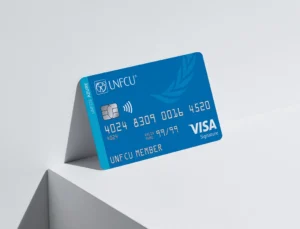A term insurance policy is often described as the purest form of life insurance. It provides high coverage at affordable premiums, making it one of the most cost-effective ways to secure your family’s financial future. However, not all term policies are the same. Before purchasing one, it is important to carefully evaluate its features to ensure that the policy truly meets your needs. With so many insurers offering multiple plans, knowing what to check can save you both money and uncertainty later.
Interestingly, comparing term policies with other life insurance products such as a unit linked pension or ULIPs helps highlight the strengths and limitations of each. Before we get into the details of what makes a good term plan, it is useful to briefly revisit what is ULIP, since many investors consider ULIPs or pension products alongside term plans for long-term planning.
What is ULIP and how is it different from term insurance?
A Unit Linked Insurance Plan (ULIP) is a hybrid product that combines life cover with market-linked investments. A portion of the premium is allocated to insurance, while the rest is invested in funds such as equity or debt. This means ULIPs offer both protection and the potential for wealth creation.
In contrast, a term plan is designed solely for protection. It provides a high sum assured at a relatively low premium but does not include maturity benefits or investments. For someone whose primary concern is affordable, large-scale risk coverage, a term plan is the better choice. For long-term wealth creation or retirement savings, ULIPs or products like a unit linked pension may complement the coverage of a term plan.
Key features to check before buying a term policy
1. Adequate sum assured
The most important feature of any term plan is the coverage amount. Experts often recommend that your sum assured should be at least 10 to 15 times your annual income. This ensures that your family can cover living expenses, education costs, and outstanding debts even in your absence. Always check whether the policy offers the flexibility to increase coverage at different life stages such as marriage or the birth of a child.
2. Premium affordability and payment options
Affordability is one of the main reasons people choose term insurance. Before purchasing, compare premiums across insurers to ensure you are getting value for money. Online policies are often cheaper than offline ones because they eliminate agent commissions. Also, check whether the insurer offers flexible premium payment modes such as monthly, quarterly, annual, or limited pay options.
3. Policy tenure
The length of the policy should align with your financial responsibilities. Ideally, your term plan should last until major obligations—such as home loan repayment or children’s higher education—are completed. Some insurers even offer coverage up to age 80 or beyond. Choosing the right tenure ensures that your dependants remain financially secure when they need it most.
4. Claim settlement ratio
The claim settlement ratio reflects the insurer’s reliability. It indicates the percentage of claims settled by the company compared to total claims received. A high claim settlement ratio, ideally above 95%, provides reassurance that your family will not face hurdles in receiving the benefit. Always review this figure before committing to a policy.
5. Riders and add-ons
Term policies can be customised with riders such as accidental death cover, critical illness benefit, or waiver of premium. These riders provide additional protection at a marginally higher cost. While not all riders may be necessary, selecting the right ones can add significant value to your policy. For example, a critical illness rider can provide a lump sum if you are diagnosed with a serious condition, helping with medical expenses and loss of income.
6. Payout options
Modern term policies offer flexibility in how the sum assured is paid to beneficiaries. Options include a lump sum, monthly income, or a combination of both. Some families may prefer regular income to manage household expenses, while others may want a lump sum to clear debts immediately. Checking payout options ensures the policy suits your family’s financial habits.
7. Exclusions and waiting periods
Every policy comes with exclusions, such as deaths caused by suicide within the first year or non-disclosure of medical history. Carefully read the terms and conditions to avoid surprises later. Some policies also have waiting periods for specific riders, such as critical illness benefits.
8. Flexibility to convert or upgrade
Some term plans allow conversion into other policies such as whole life or endowment plans at a later stage. Others offer the option to increase coverage as income grows. Such flexibility ensures your policy can adapt to changing financial needs over time.
How term policies compare with ULIPs and unit linked pensions
When evaluating term insurance, it is common to compare it with ULIPs or pension plans. A unit linked pension, for instance, not only provides insurance but also builds a retirement corpus by investing in market-linked instruments. ULIPs, similarly, combine protection with wealth creation. However, these products usually involve higher premiums and additional charges.
If your main priority is to secure high coverage at the lowest cost, a term plan is unmatched. On the other hand, if you want to combine insurance with investment or retirement planning, ULIPs or pensions can complement your term policy. Many financial advisors recommend starting with a term plan as the foundation of financial security and then adding other products like ULIPs as your income and responsibilities grow.
Conclusion
A term policy is one of the most effective ways to ensure your family’s financial security, but only if you choose wisely. Before purchasing, carefully evaluate features such as sum assured, premium affordability, policy tenure, claim settlement ratio, riders, and payout options. Comparing these elements across insurers helps you find the plan that balances cost and protection.
While exploring other products such as ULIPs or a unit linked pension can add value for long-term savings, understanding what is ULIP shows that it serves a different purpose. Term insurance remains the most affordable and straightforward way to secure large-scale coverage.
By checking the right features and aligning them with your financial responsibilities, you can purchase a term policy that not only protects your family today but also adapts to their needs for years to come.






